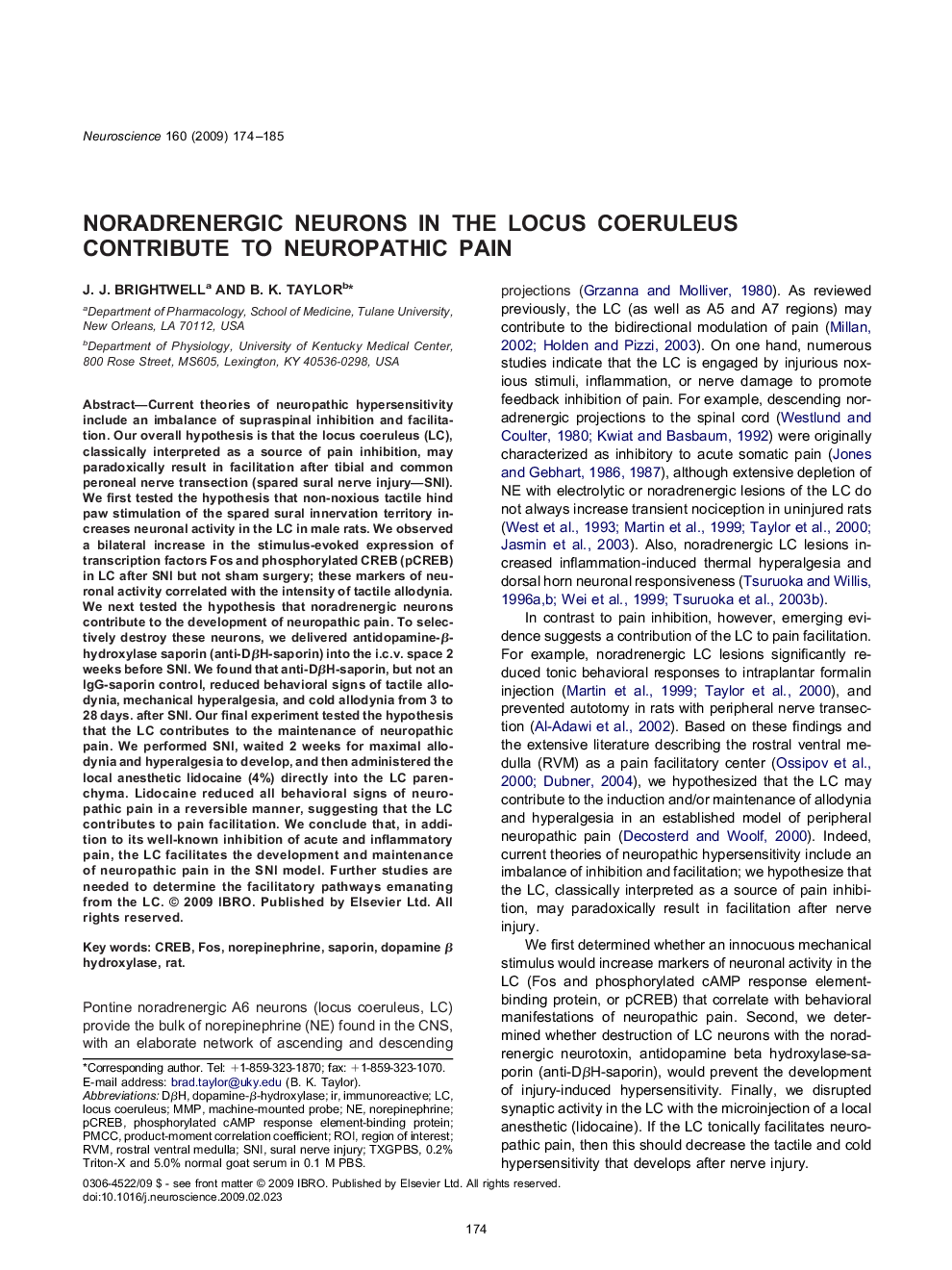| کد مقاله | کد نشریه | سال انتشار | مقاله انگلیسی | نسخه تمام متن |
|---|---|---|---|---|
| 4340090 | 1295782 | 2009 | 12 صفحه PDF | دانلود رایگان |

Current theories of neuropathic hypersensitivity include an imbalance of supraspinal inhibition and facilitation. Our overall hypothesis is that the locus coeruleus (LC), classically interpreted as a source of pain inhibition, may paradoxically result in facilitation after tibial and common peroneal nerve transection (spared sural nerve injury—SNI). We first tested the hypothesis that non-noxious tactile hind paw stimulation of the spared sural innervation territory increases neuronal activity in the LC in male rats. We observed a bilateral increase in the stimulus-evoked expression of transcription factors Fos and phosphorylated CREB (pCREB) in LC after SNI but not sham surgery; these markers of neuronal activity correlated with the intensity of tactile allodynia. We next tested the hypothesis that noradrenergic neurons contribute to the development of neuropathic pain. To selectively destroy these neurons, we delivered antidopamine-β-hydroxylase saporin (anti-DβH-saporin) into the i.c.v. space 2 weeks before SNI. We found that anti-DβH-saporin, but not an IgG-saporin control, reduced behavioral signs of tactile allodynia, mechanical hyperalgesia, and cold allodynia from 3 to 28 days. after SNI. Our final experiment tested the hypothesis that the LC contributes to the maintenance of neuropathic pain. We performed SNI, waited 2 weeks for maximal allodynia and hyperalgesia to develop, and then administered the local anesthetic lidocaine (4%) directly into the LC parenchyma. Lidocaine reduced all behavioral signs of neuropathic pain in a reversible manner, suggesting that the LC contributes to pain facilitation. We conclude that, in addition to its well-known inhibition of acute and inflammatory pain, the LC facilitates the development and maintenance of neuropathic pain in the SNI model. Further studies are needed to determine the facilitatory pathways emanating from the LC.
Journal: Neuroscience - Volume 160, Issue 1, 21 April 2009, Pages 174–185